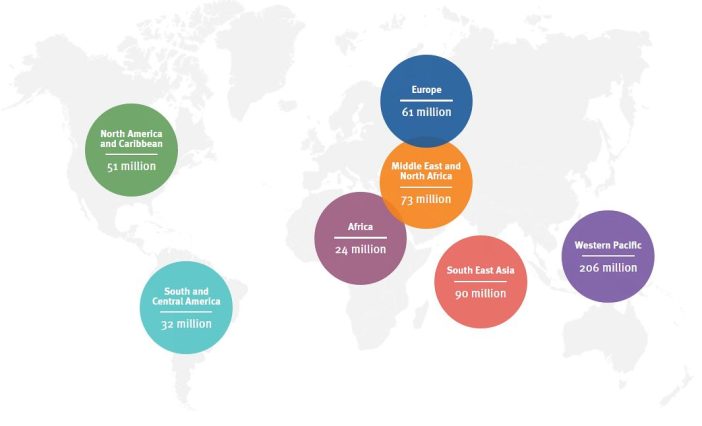My Journey from Customer Support to Diabetes Awareness
Once upon a time, I worked in customer support. Like many others, I spent countless hours sitting behind a desk, staring at a computer screen, and answering calls. I didn’t realize how much of an impact this sedentary lifestyle was having on my health. Little did I know that my past job was setting the stage for a greater awareness of diabetes and the importance of a healthier lifestyle.
A sedentary lifestyle is characterized by excessive sitting and minimal physical activity, which can increase the risk of obesity and insulin resistance. Both of these factors are known to contribute to the onset of type 2 diabetes.
Income, education, occupation, access to healthcare, and social support can affect diabetes development and treatment

537 million adults are living with diabetes
6,7 million deaths due to diabetes 2021
3 in 4 adults with diabetes live in low- and middle-income countries
For more stats about diabetes visit IDF’s Diabetes Data Portal
While my experience in a sedentary customer support role shed light on the connection between a sedentary lifestyle and diabetes, it is essential to recognize that this is only a small part of a much larger issue. The prevalence of diabetes is influenced by numerous social factors, including income inequality, healthcare access, and food insecurity, which can create a complex web of challenges for those at risk or living with the condition.
Income inequality can cause stress and anxiety, which can worsen diabetes. Diabetes treatment also requires healthcare access. People without health insurance or restricted access to healthcare may not obtain regular examinations, blood sugar monitoring, or medicine to treat their disease, causing problems and higher healthcare expenditures.
Food insecurity, not having enough healthful food, also contributes to the diabetes epidemic. Diabetes risk increases with lack of access to food. Addressing food insecurity increases access to fresh fruits, vegetables, nutritious meats, and whole grains, which help regulate blood sugar levels and prevent problems.
Finally, my sedentary customer support job helped me recognize diabetes’ multifaceted origins. To develop successful diabetes prevention, early detection, and treatment options, social issues must be taken into account. We can improve diabetes treatment and prevent complications by tackling income disparity, healthcare access, and malnutrition.
Click here to test you Knowlegede with a diabetes QUIZ

More knowledge about diabetes?


Sources
HealthPartners. (2023, April ). Health risks of a sedentary lifestyle and how to make changes. Retrieved from www.healthpartners.com: https://www.healthpartners.com/blog/health-risks-of-sedentary-lifestyle/#:~:text=What%20is%20a%20sedentary%20lifestyle,movement%20in%20their%20daily%20life.
Hill, J., Nielsen, M., & Fox, M. H. (2013). Understanding the social factors that contribute to diabetes: a means to informing health care and social policies for the chronically ill. The Permanente journal, 17(2), 67–72. https://doi.org/10.7812/TPP/12-099
IMF. (2023, April ). The IMF and Income Inequality: the Introduction to Inequality . Retrieved from www.imf.org: https://www.imf.org/en/Topics/Inequality/introduction-to-inequality
International Diabetes Federation. (2021). IDF Diabetes Atlas Tenth Edition. International Diabetes Federation. Retrieved from https://diabetesatlas.org: https://diabetesatlas.org/atlas/tenth-edition/
Office of Disease Prevention and Health Promotion. (2023, April). Healthy People 2030: Food Insecurity. Retrieved from www.health.gov: https://health.gov/healthypeople/priority-areas/social-determinants-health/literature-summaries/food-insecurity#:~:text=Food%20insecurity%20is%20defined%20as,possible%20outcome%20of%20food%20insecurity.
The Equality Trust. (2023 , April.). Impacts: Health . Retrieved from equalitytrust.org: https://equalitytrust.org.uk/health



